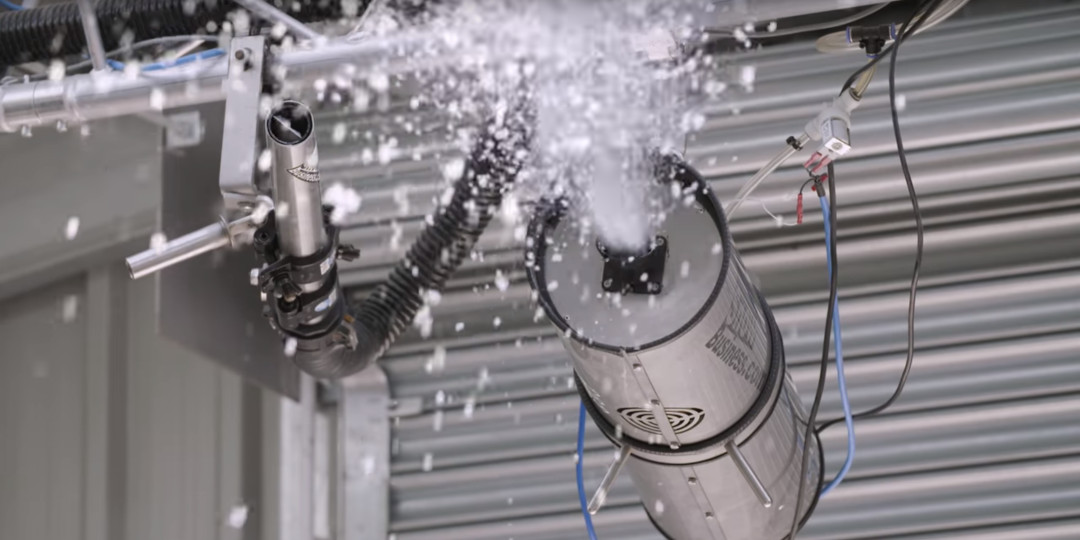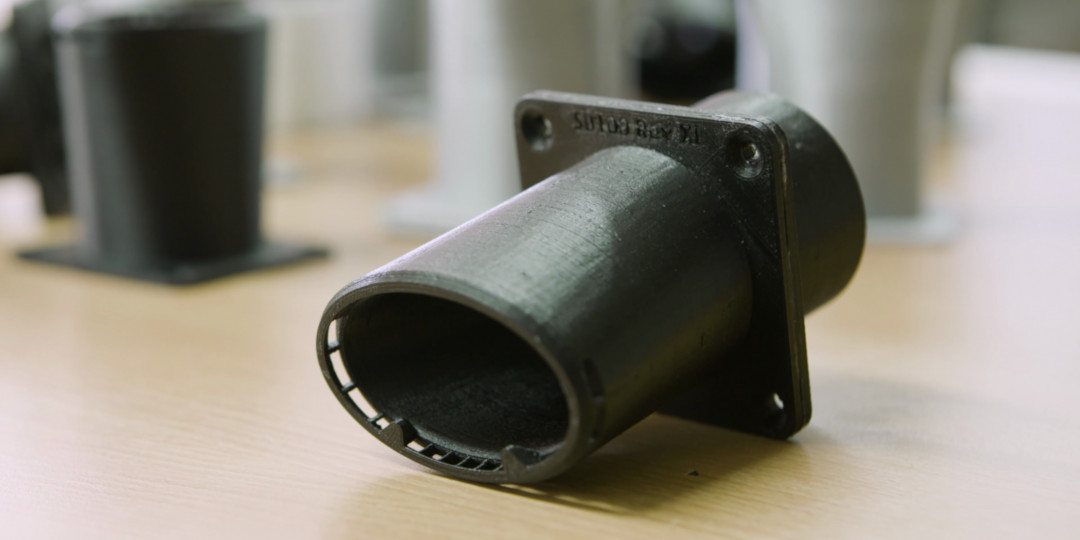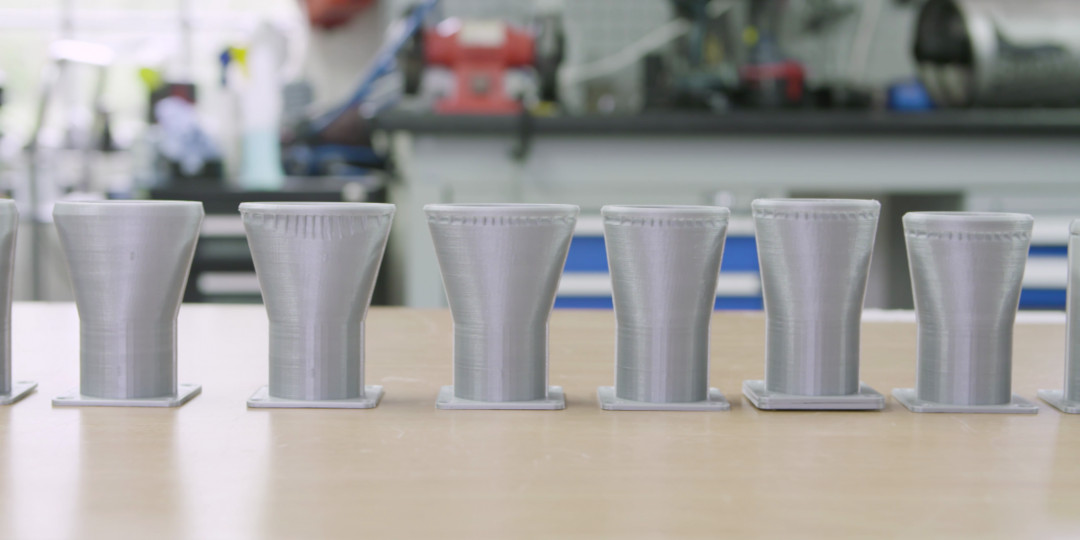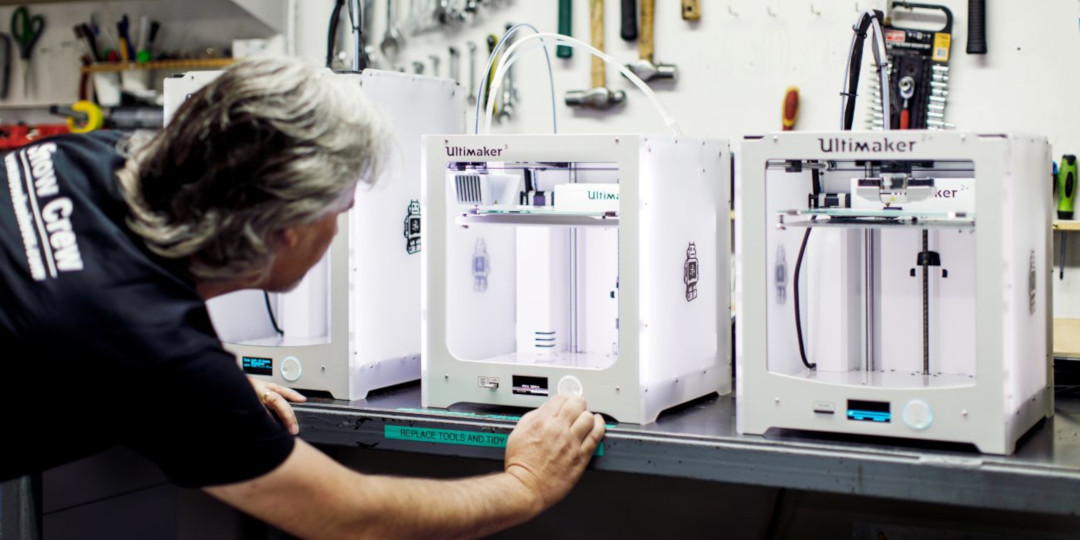Snow Business is the world leader in snow and winter effects. The company develops snow machines that are used in the film and TV industry as well as on Christmas fairs and other live events. They use their Ultimaker 3D printers for prototyping, functional testing, and creating final parts for the snow machines. In-house 3D printing significantly speeds up their iterative design process and yields considerable cost savings along the way.
Since they work with big production companies, chances are that the snow you'll see in a movie was made by Snow Business. Productions such as 007: James Bond, Kingsmen, or Bridget Jones's Diary all feature snow made by them. Paul Denney is Head of Research at Snow Business and is responsible for designing the falling snow machines. Most of the focus of R&D goes out to the machine's nozzle, which is where the machine mixes air with fluid to create the snow effect.
Iterative R&D process
As Paul explains, the nozzles have a complex air and fluid flow geometry, which makes it impossible to cast them. The only way to create new nozzles is by 3D printing, he says. New nozzles are developed through an iterative process of print, try, adjust the model, and repeat - often taking numerous revisions before reaching a design that matches the high-quality standards the company set.
Snow Business 3D prints their final nozzles on the Ultimaker.
Development of new nozzles is done through an iterative process, often taking numeruous revisions.
Outsourcing
Before the company started working with Ultimaker, they were outsourcing the production of nozzles to SLS service bureaus. As Paul explains, "the parts these suppliers delivered were of good quality, but it was slow and it was expensive." Every time he needed to make a design change, he was required to make a new order for at least £125,- and wait for anything up to 7 days for the new part to arrive. This significantly held up the R&D cycle, so the company started looking into an in-house solution that could speed up their iterative design process.
What I really needed was a technology that I could use myself, on-site, that would be able to do what I needed it to do. That's when we bought our first Ultimaker
Desktop 3D printing
Paul got the Ultimaker 2+ for prototyping and producing new nozzles for the snow machines. In stark contrast with the outsourcing solution, he can now print new parts in a matter of hours at almost no cost (despite the few £s in filament cost). While he could still use the SLS service, the in-house solution turned out to be more cost-effective in the long run. In fact, Paul estimates the first printer they bought for the company effectively paid for itself within just 2 weeks.
Design freedom with the Ultimaker 3
The nozzles printed on the Ultimaker 2+ were printed in ABS. Paul used to split up the model in 2 parts and glue them together after the printing was done. The reason for this is that the support structure on ABS leaves marks on the final part when printing in one piece. Recently, the company extended its range of Ultimaker 3D printers with the Ultimaker 3. Now Paul is able to print the nozzles in one piece with Nylon and water-soluble PVA support - leaving not a single mark on the finished part and saving post-printing assembly time.
As a result of the savings achieved with the Ultimaker, the first printer was estimated to pay for itself within 2 weeks
3D printing in engineering
Paul expects 3D printing to be "absolutely huge" in the future, as it makes its way into i.a. the automotive and aerospace sectors. He is happy to be in at the start of this technology with, as he claims, "the best printers in the world".
In-house desktop 3D printing can revolutionize the way companies develop and produce parts. Snow Business uses the Ultimaker in different phases of product development, including prototyping, functional testing, and for creating end-use parts. Like Paul, engineers around the world work smarter and innovate faster with Ultimaker 3D printers on their desktop or workbench. You can too, by learning more about our products:


























